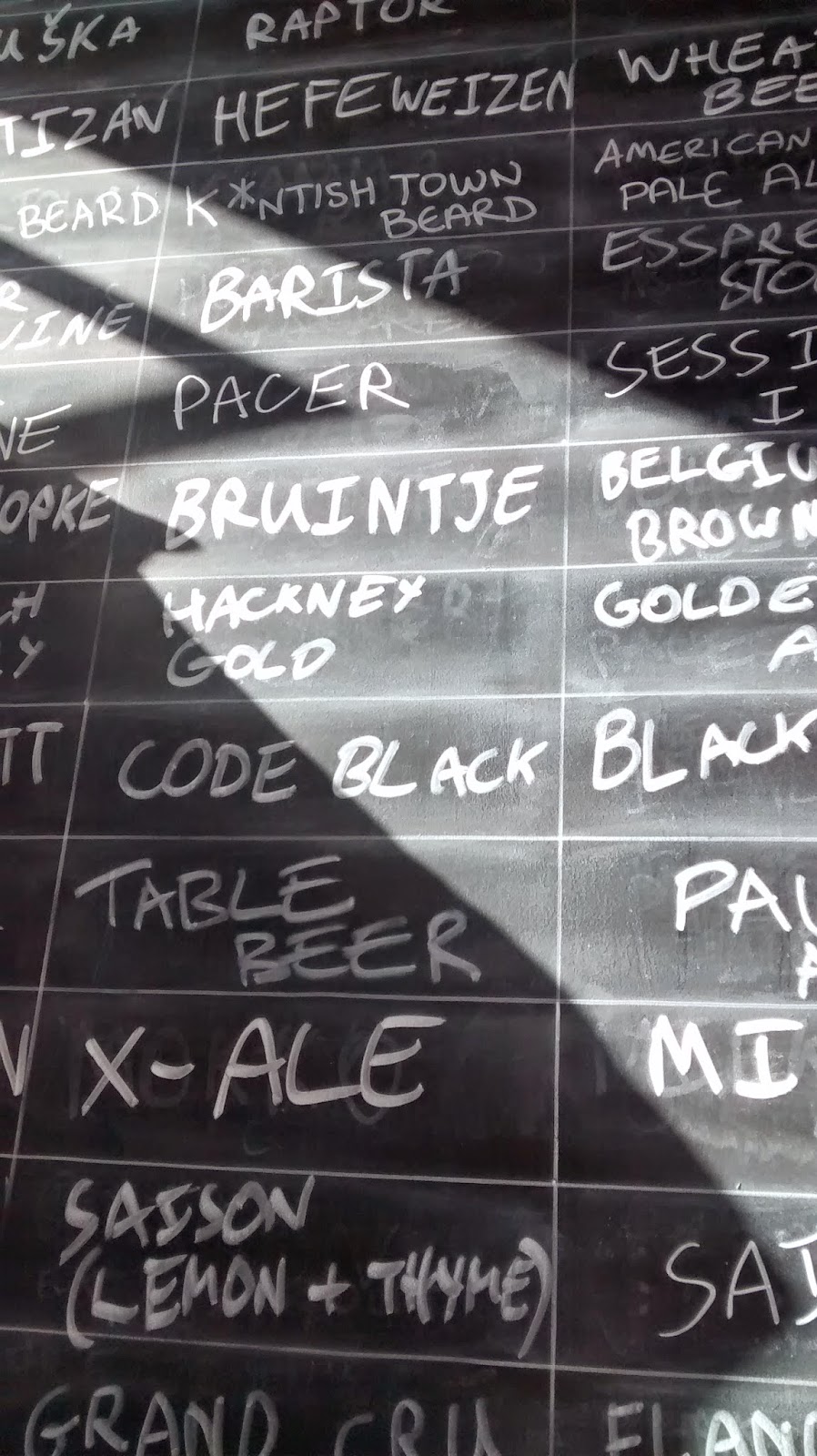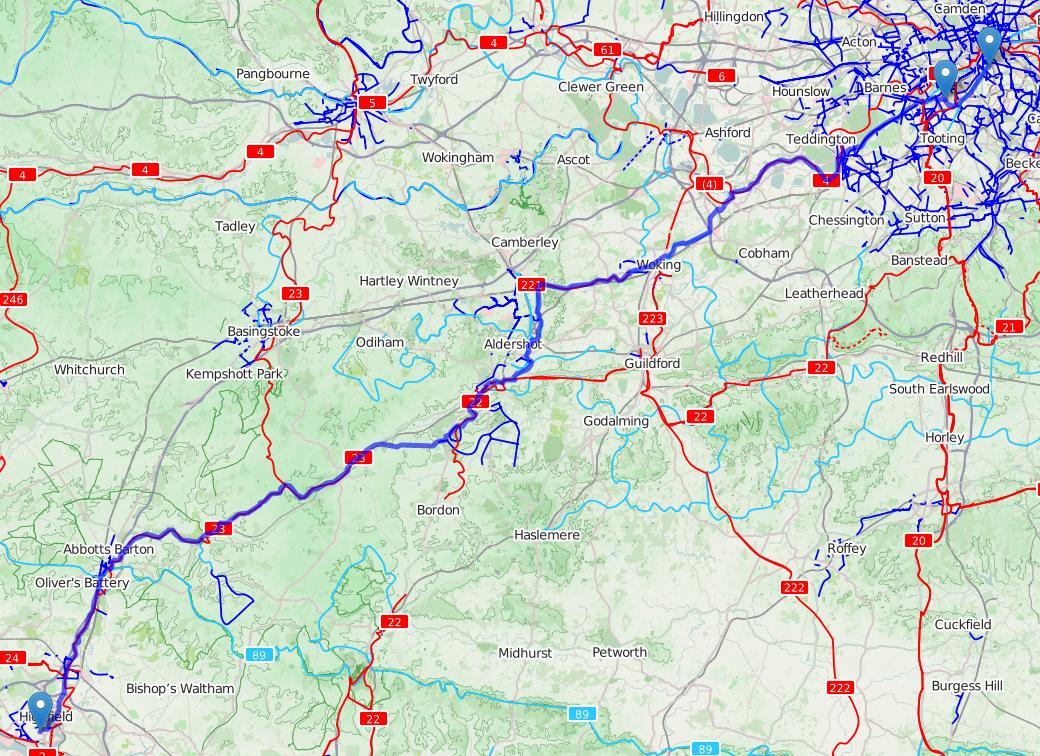Yet another blog about the Bermondsey mile
Bermondsey. A trip along the South London railway arches containing tiny start-up breweries was
de rigeur for any self-respecting beer connoisseur in 2012. Today, this trip may have passed into craft cliché but, hey, writing a blog is
so 2006.
Weighing in at around one and a half miles from the end closest to London Bridge down to South Bermondsey, this row of breweries would better be termed a dozen furlongs, if such units were still in widespread use. Irrespective of the distance, the sequence from north to south is the very new Anspach & Hobday and Bullfinch, which both share the same premises, Brew by Numbers, the Kernel, Partizan and Fourpure. Each of these opens the doors to their tiny brewing premises to the general public every Saturday.
A rational approach would be to work from one end to the other, but given that the Kernel opens at 9am (!) and closes at 2pm, we decided to head directly from Bermondsey tube (Jubilee) to the centre of the 'mile'.
El cólonel de Bermondsey
The Kernel premises occupy a double arch under the railway, with one side dedicated to the shop and the other to drinking in. With its long wooden benches, it reminded me of a German beer hall and had a similar convivial atmosphere even as we arrived shortly after midday.

The owners encourage patrons to bring their own food to eat, as they serve none themselves. The surrounding area offers a number of dedicated shops and markets in which to procure something to nibble on over an IPA. Directly neighbouring the Kernel is the Ham and Cheese shop, from which we selected a chunk of fromage d'ossau - being the only snackable option between hard parmigiano reggiano and mozzarella. The selection for meatatarians was significantly wider and, judging from the satisfied noises from those in our party, delicious. To accompany our haul, we attempted to find some bread, which was no mean feat given the time of day. Most bakeries had sold out by 10am, but we eventually purchased some painfully crusty bread from the wine shop over the road, where both staff and customers seemed to be French.
As expected from previous sampling of their bottled range, the selection at the Kernel brewery was all of excellent quality. Particularly noteworthy were the Black IPA and the Raspberry Sour - a slight twist on the lip-puckering London Sour - which, at around 3%, is a perfect summer drink.
Screwshed and Toolbarn
Heading to the southern-most brewery in the group, Fourpure, we became unsure as we departed from the safety of the railway arches into a trading estate. The principal trade of the neighbouring businesses seemed to be hardware and tools. We expected odd looks from the Saturday workers, but were reassured when we passed a returning group of fellow ale spotters.
Rounding the corner, Fourpure hove into view, with its doors thrown open and a hearty crowd of drinkers sat on wooden benches. A game of table tennis was in progress and the owners made no fuss as the ball regularly went skittering under the brewing equipment.
A surprise favourite emerged from our sampling: the Pils. Usually using an IPA as the yardstick by which to measure a brewery, this is not a style of choice for many of the group. However, the pils was a crystal clear column of golden, herby, refreshing beer that surely ranks among the best of the German and Czech varieties. The Saaz and Hallertau hops provided a perfect palette reset for the next in the series of breweries.
All hail the ale that's pale
By now, the crowds were starting to amass. Partizan offers the smallest space, occupied mostly by the brewing equipment and serving bar. This leaves the crowd outside, which, with the sun out, was a most enjoyable experience.
While the Kernel and Fourpure had stuck fairly rigidly to known styles, Partizan's offerings were more playful. We sampled the Cuvée Lemon, which offered enormous lemon flavour without being sour and was reminiscent of Siren's Limencello ale. The Foreign Export Stout (FES) was another exceptional brew, but didn't quite surpass Arbor's Breakfast Stout I had tried the previous night. The only duff note was hit by the IPA (Chinook and Columbus), which had a cloudy appearance and a muddy taste. I expect this was a one-off, so I will be keen to try it again.
It's pronounced "barrel agéd", I tell you
Brew by Numbers was our next stop, given that the Kernel had closed as we passed it for a second time. Crowds had grown significantly as the afternoon drew on, with the result that we had to queue briefly before making our way into BBNo.
The wait was worth it. BBNo offers a huge range of beers on tap and in bottle, all numbered according to their style and batch. The 04|01 (Berliner Weisse) was a particular hit with me, as it took me straight back to breakfast in a Berlin café, where I was served the uniquely sour low-alcohol wheat beer (strangely available with red or green food colouring, presumably to make it seem more like a morning drink).
After the first round, we wisely chose to sample the barrel-aged porters available in bottle. Aged in Jim Beam casks, these already excellent full-bodied stouts get a smooth vanilla edge to them, which slipped down very nicely.
May the craft be with you
Our final stop on the 'mile' brought us to two of the newer start-ups in the area: Anspach & Hobday and Bullfinch, which share premises under the train tracks. In a small setting, seating was plentiful but the visit was a slightly disappointing end to an otherwise excellent tour of South-East London.
We sampled several offerings, including the award-winning A&H Porter, but none sang on our tongues due, perhaps, to our now weary palettes. I have no doubt that in a year or two's time, a return visit will prove that these two breweries have mastered their craft.
Onwards
Undaunted, we proceeded from Bermondsey and took the short walk to Tower Bridge, where we ensconced ourselves in the Draft House.
Suddenly confronted by choice from any number of brewers, my ability to choose was confounded. I selected a Battersea Rye from London-based Sambrook's Brewery. The rye flavour was powerful and would have been complemented perfectly with a slice of cheddar, gherkins and some German rye bread. The Draft House did not offer this precise selection, so we chose from their menu of burgers, nachos and tasting boards. An excellent end to the day.



















